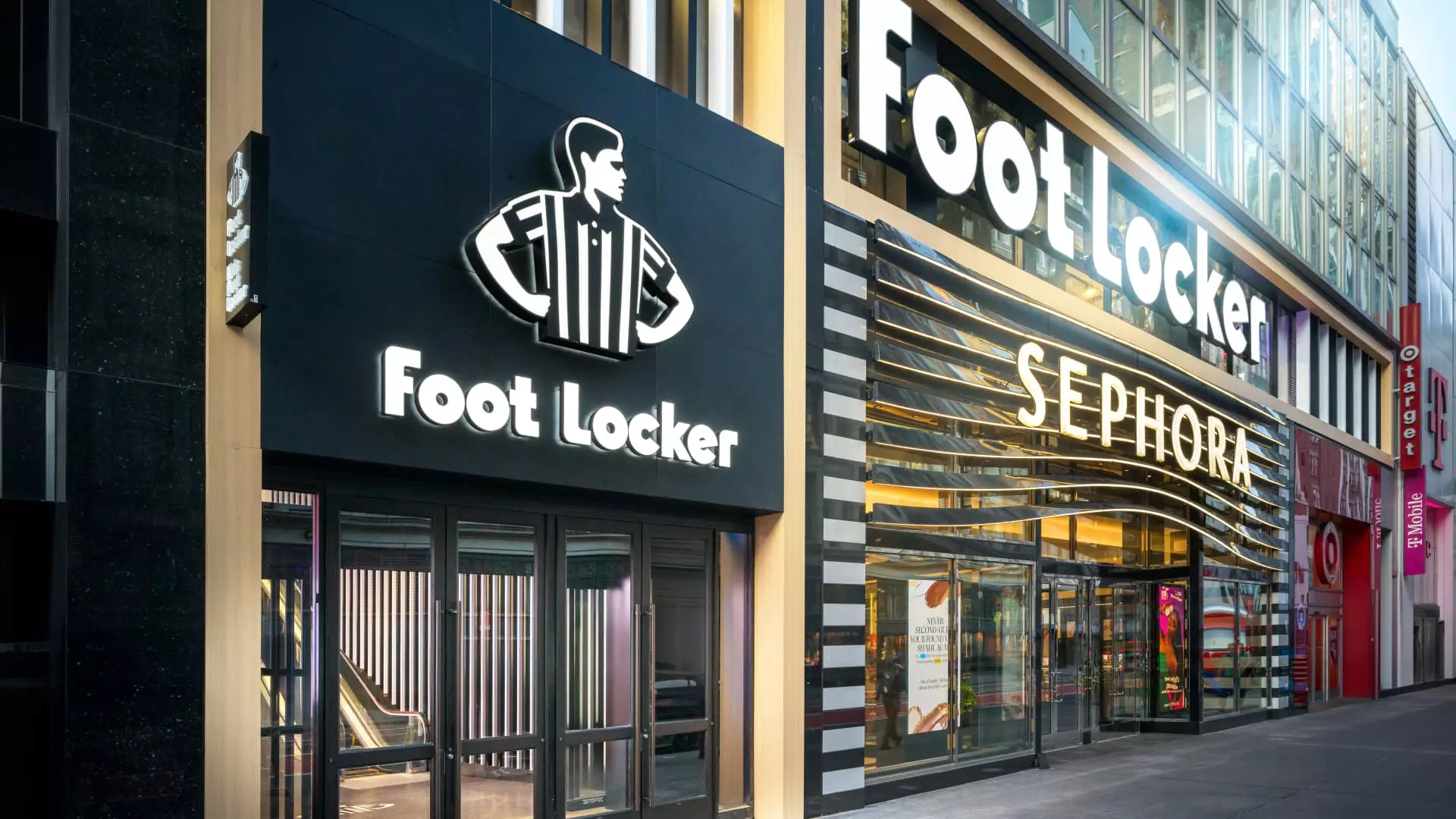Foot Locker has recently thrust itself into the spotlight in the retail sector, amidst fluctuating consumer behaviors and an increasingly competitive market. On Wednesday, the company made headlines by revising its full-year guidance downward after revealing disappointing third-quarter results, which raised alarms for its primary vendor, Nike. With a substantial reliance on Nike, accounting for approximately 60% of its sales, Foot Locker’s challenges not only shed light on its own vulnerabilities but also signal potential turbulence for one of the world’s most recognized athletic brands.
Foot Locker’s quarterly earnings painted a grim picture, leading to a 15% drop in its share price during premarket trading. The reported earnings per share (EPS) of 33 cents fell short of analyst expectations, which had anticipated 41 cents, indicating an unforeseen pressure on its profitability. Sales figures also dipped, totaling $1.96 billion, a decline from $1.99 billion over the same period last year, raising questions about the effectiveness of their sales strategies.
CEOs and financial analysts often stress the importance of aligning closely with customer demand, and in this case, Foot Locker’s ability to interpret consumer behavior appears to be lacking. CEO Mary Dillon noted that shopping patterns reveal spikes around special events such as back-to-school shopping and holiday sales, yet there is a significant pullback during off-peak periods. This stark contrast in consumer behavior presents challenges that demand adaptive strategies from Foot Locker.
Nike’s recent dip in performance is particularly concerning for Foot Locker, as the latter’s reliance on Nike products significantly constrains its operational flexibility. Dillon’s remarks about the “softness” at Nike suggest a broader trend in the brand, which has struggled to innovate and diversify its offerings effectively. The appointment of Elliott Hill as Nike’s new CEO brings hopes of a revitalized strategy, but the lack of a clear vision to date heightens Foot Locker’s uncertainty moving forward.
As Nike grapples with its own systemic issues, Foot Locker’s fate seems increasingly intertwined with that of its largest provider. This dependency highlights potential vulnerabilities in Foot Locker’s business strategies; if Nike continues to falter, Foot Locker could face dire consequences in sales and market share.
In light of these challenges, Foot Locker took the cautionary step of slashing its guidance for the fiscal year. For the holiday quarter, the company anticipates a fall in sales between 1.5% and 3.5%, contrasting sharply with a modest 2% growth from the prior year. Analysts had expected a decline of just 1.6%, amplifying the disappointing nature of the company’s projections.
This shift represents not merely an improvement or a temporary setback, but rather a critical juncture that reflects broader economic pressures. A notable aspect of their revised forecast has been attributed to increased promotional activity, which the company had previously underestimated. Dillon’s recognition that the marketplace has become “pretty promotional” signifies a need for Foot Locker to rethink its branding and pricing strategies.
Despite the financial hardships Foot Locker is enduring, there are glimmers of hope within its recent performance numbers. The company reported a 2.4% increase in comparable sales year-over-year, albeit below the anticipated 3.2%. Furthermore, specific retail segments, such as Champs and WSS, experienced positive growth, suggesting that Foot Locker’s strategic initiatives may be beginning to bear fruit.
Dillon’s focus on revitalizing the store experience through refurbishment programs indicates a proactive approach to overcoming these challenges, even during a tumultuous financial period. Such enhancements could positively influence customer experiences and loyalty, which are critical to retail success.
Foot Locker stands at a crucial crossroads within the retail landscape, grappling with the broader implications of Nike’s performance while also addressing its own operational effectiveness. The transition into a more promotional environment presents immediate challenges that necessitate quick thinking and flexibility. As Dillon expresses optimism about establishing a fruitful relationship with Nike’s new leadership, it remains to be seen whether Foot Locker’s downward adjustments will lead to sustainable recovery or more mountainous obstacles in the quarters ahead. For now, the company’s success will hinge on its dexterity in responding to a marketplace characterized by volatility and unpredictability.

